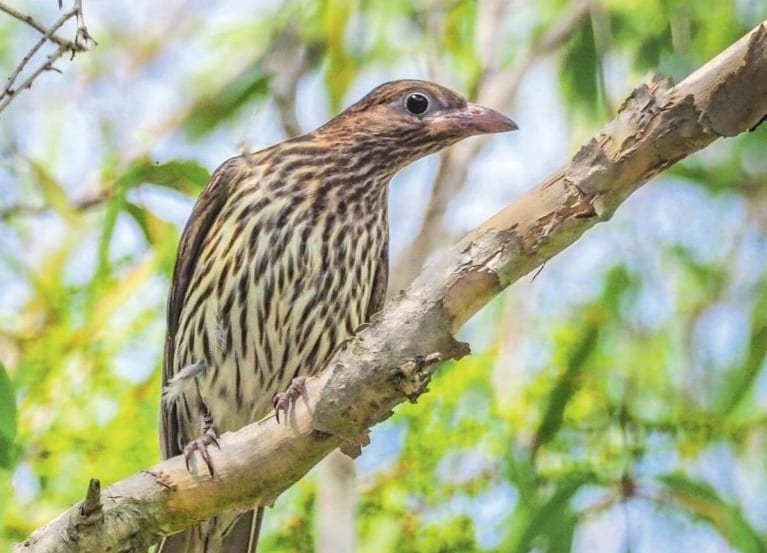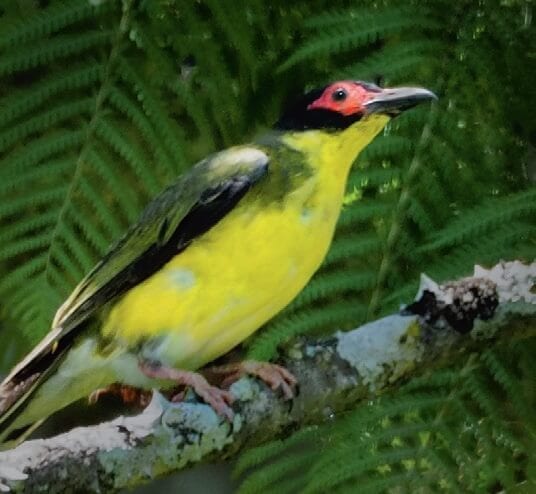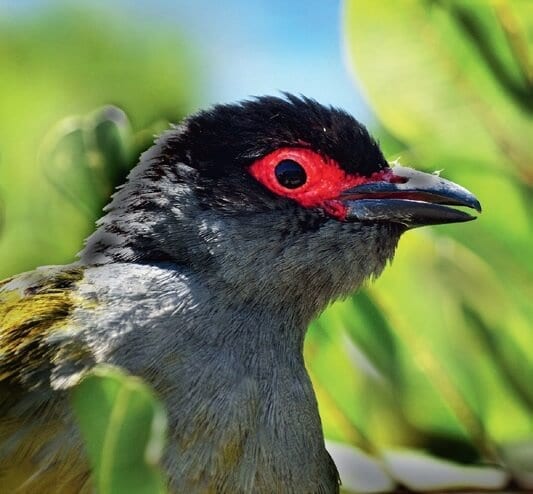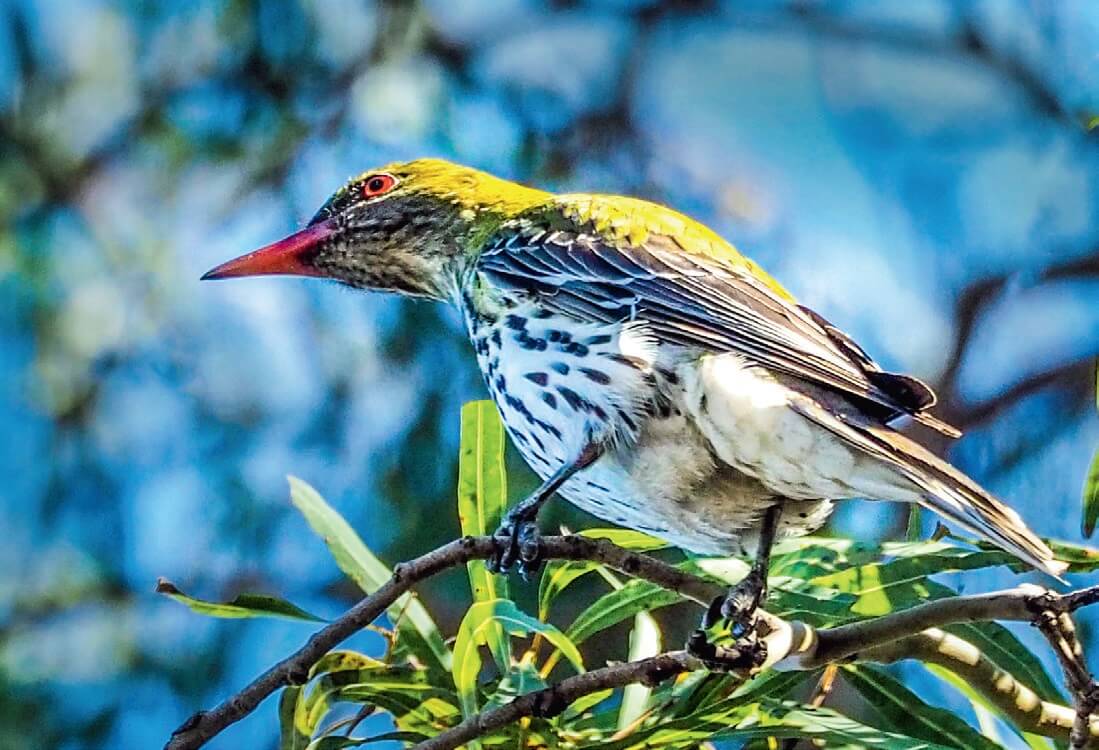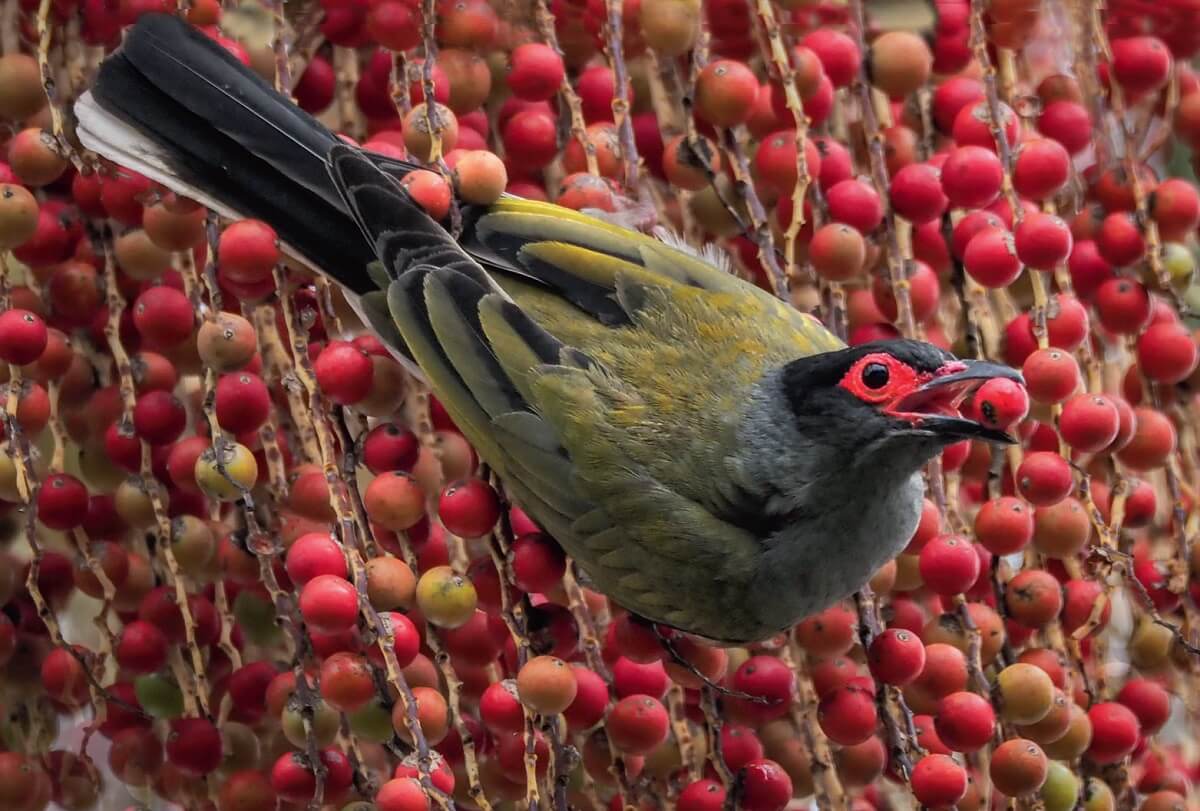Tags: Australian native wildlife. Queensland. Figbird. Birds.
The green form of the Australasian Figbird which belongs to the Oriole family is a very common inhabitant on Bribie Island. They are mostly seen gorging on berries on the many fig trees growing here but are also found in parks and gardens. There are two forms of Australasian Figbirds in Australia.
Featured image(above): Female Figbird
The Green Figbird is what we have south of Proserpine and the Yellow Figbird is found in the north. Green Figbird males have a distinctive red patch of skin around their eyes, black heads, white breasts, and olive green backs. Yellow Figbird males also have the red patches but are a striking yellow on their breasts and abdomens. Females of both forms are identical with brown colouring above and streaked on the underparts. Figbirds are medium-sized passerines 27-29 cm in length and weigh 100-150g.
Figbirds are found in eastern and northern Australia and in PNG on the edges of rainforests, in Mangrove and Melaleuca swamps, in woodlands and on trees in suburbia. They are sometimes nomadic chasing fruiting trees where they mostly feed high in the canopies. Insects and seeds are also on the menu. There are a number of native fruit trees that can only be germinated by fruit-eating birds eating their seeds. Some of the seeds pass undigested through their bodies and germinate to create new growth.
The breeding season is usually between October and February. Cup-shaped nests are built of small sticks and vines in horizontal forks usually about 20 m from the ground. They often build their nests fairly close together in groups. Some Figbirds have been known to build their nests close to Frogmouths’ nests, presumably as a form of protection as predators could be discouraged by the presence of such large birds of prey.
Two or three brown mottled eggs are laid and incubated by both parents for about 18 days. Both parents tend to their young and are sometimes helped by single males in the group. Fruit and insects are regurgitated by the adult birds to feed the chicks. Nestlings remain in the nest for 17 days before learning to fly.
Females are sometimes confused with Olive-backed Orioles. Female Figbirds have black eyes and beaks while Orioles have red eyes, red beaks, and olive backs. Common names are Green Figbird, Yellow Figbird, Northern Figbird, Southern Figbird, and Mulberry bird. Figbirds have adapted well to human habitation thus their conservation status is of least concern.
